Learning
Information about the Australian koala
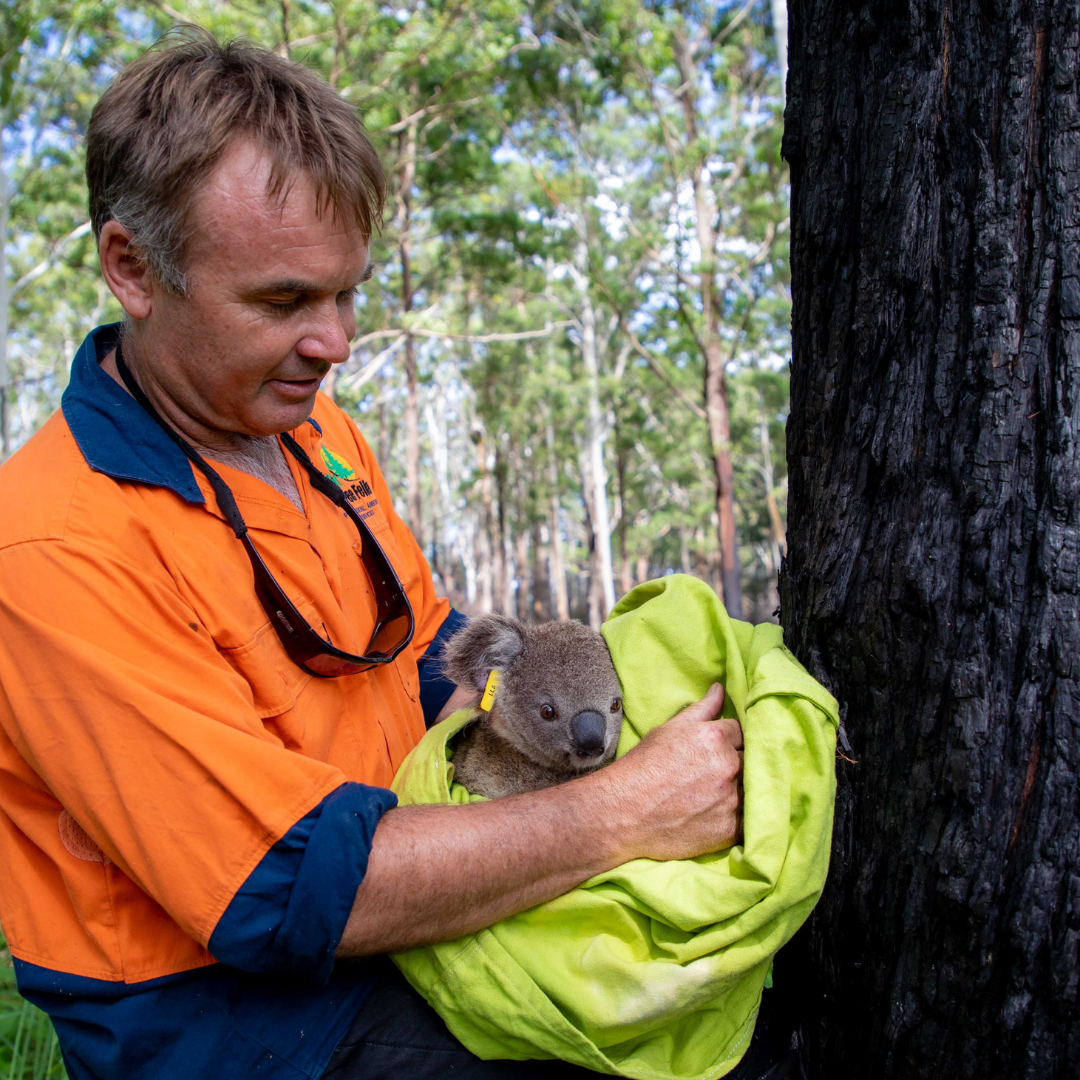
Koala Rehabilitation Online Course
Are you a wildlife carer, veterinarian, vet nurse or researcher wishing to learn more about koala rehabilitation?
Koala Conservation Australia has created an online course that covers the myriad of issues that are driving koalas into decline.
This comprehensive course is suitable for new and refresher carers and also includes the option of a hands on practical component at the Port Macquarie Koala Hospital.
The cost of the online course is $175 and includes specialised information via video, module questions to cement your learning and a certificate of completion at the end of the course.
Please note that the practical component of the course is only available through a booking system and is available after course completion for a fee.
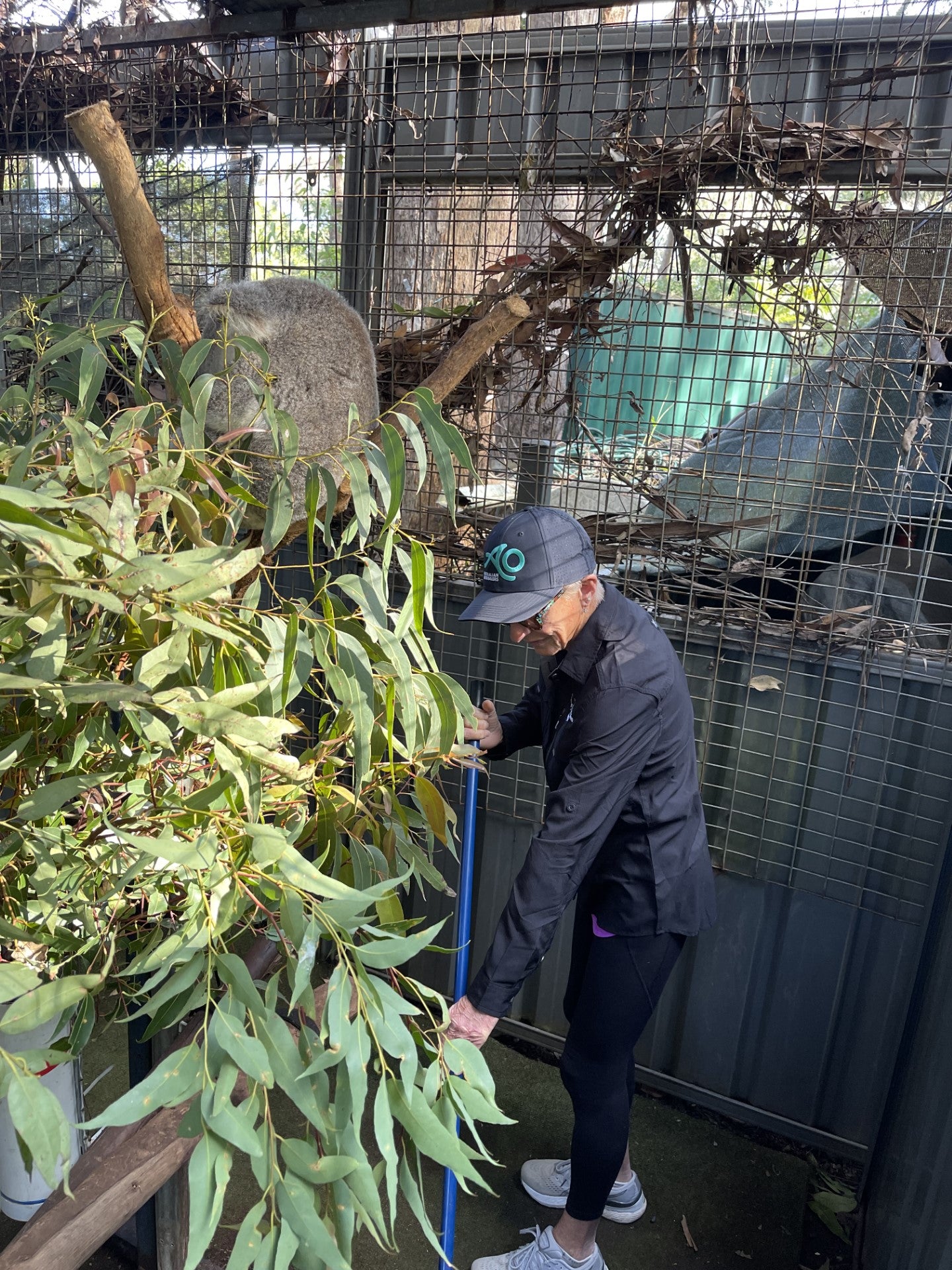
Koala Rehabilitation Practical Program
Once you have completed our Wild Koala Rehabilitation online course you can book into our practical program.
You can learn more and book using the link below.
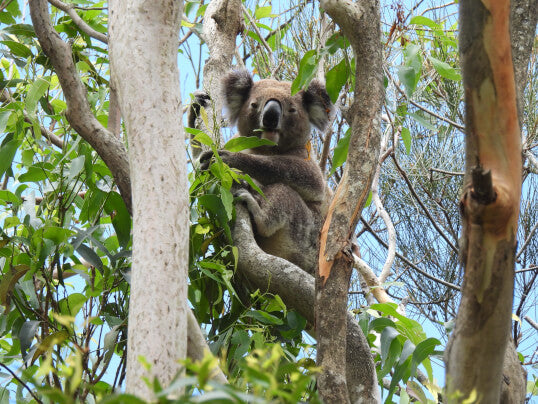
Ecology
The koala is a tree-dwelling, folivorous marsupial found in scattered populations along the eastern seaboard of Australia – from west of Cairns in far north Queensland through to South Australia. More isolated populations are also found on the tablelands of the Great Dividing Range and the western plains of both Queensland and NSW. Koalas are found across Victoria and populations on mainland South Australia as far as Adelaide. There are also populations relocated from the mainland to islands off Queensland, Victoria and South Australia.
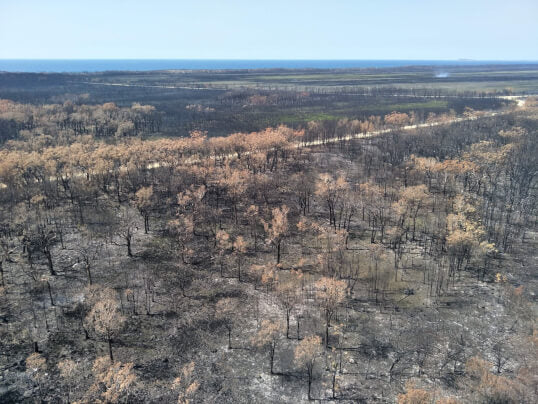
Habitat Loss
Due to habitat loss, the koala is now under threat, making it a sentinel animal for forest-dwelling species in this country. Basically, if the koala is wiped out, whatever (and whoever) is responsible for its eventual extinction will also precipitate the demise of other fauna and flora. Australia holds the shameful title of having the greatest number of extinctions of mammals in the world.
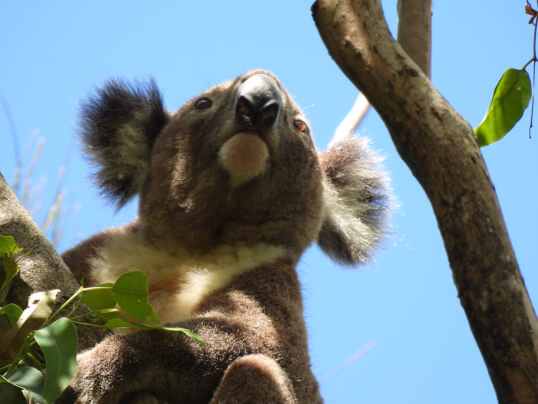
Diet and Gut System
There are four main marsupial species that feed on eucalypt leaf – the greater glider, the common ringtail possum, the common brush tail possum and the koala. Both the greater glider and the koala use eucalypts as their principal food source.
Koalas, a monogastric hindgut fermenter, not only have a large and complex digestive system to accommodate their diet of eucalypt leaves, their whole lifestyle has evolved around it. Starting with the selection of the right leaf type, the koala grabs a branch, then sniffs the leaf to check its quality (and toxicity level) prior to consumption. The leaf is broken off with a strong biting action, masticated (chewed), mixed with saliva to allow enzymes to begin the breakdown process, and then swallowed, before ending up in the stomach.
Koalas “chew” their leaf in a methodical size-reduction process. Provided koalas have unworn, sharp interlocking cusp points on their molars, this is done efficiently. Aged koalas with worn, flat teeth cannot achieve an adequate breakdown of leaf. The result is that such koalas cannot make use of their food and will basically starve to death.
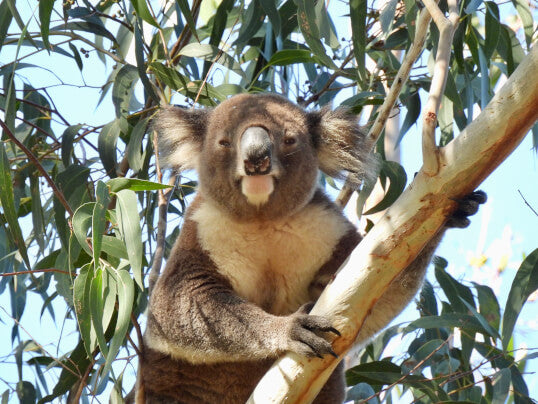
Digesting Toxins
We often get asked why we cannot “cure” some koala diseases and why we cannot give a number of drugs to koalas. This is why…
Eucalyptus foliage is very tough and contains a number of chemical compounds designed to protect the tree. These compounds are quite toxic and would kill the majority of animals (or people for that matter) if they decided to eat them. Koalas along with possums and gliders have evolved over millions of years the ability to live on a diet of eucalyptus leaves without suffering any issues with the deadly chemical compounds.
So how does a koala cope with the toxins?
Koalas have developed an amazing liver that is quite big, has multi lobes and very complex. Its job is to breakdown and excrete all those nasty compounds and eliminate them from the body via the urine.
This liver works so well, that a number of medications that are given to koalas are metabolised, broken down and excreted out before they have any chance of reaching the bloodstream and doing the job they are designed to do.
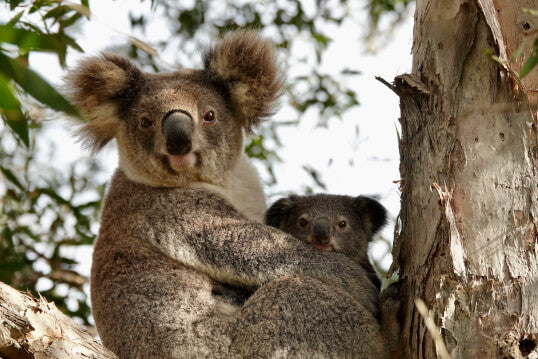
Social Structure
Even though koalas are seen as solitary animals, they actually live their lives as part of a dynamic, ordered hierarchical system.
Each koala within the population lives in an individual home range. The home range size is dictated by the age, sex and social standing of each koala which includes the amount of trees, how far apart they are located and what use they have. A koala occupies its home range for life unless pushed out through age, infirmity or habitat removal. All home ranges within each population overlap at various points. Koalas also vocalise to each other, so communication for this animal is an integral part of daily life.
The fittest, biggest and most virile male koala is the alpha male. He occupies the best quality habitat, which is usually the largest in size with his territory overlapping the home ranges of 3–4 higher ranking breeding females.
Often there is an alpha female, a healthy, fit, fertile, breeding koala who occupies prime habitat adjacent to the alpha male. It is necessary for all breeding females to obtain good-quality habitat. Lactation takes a lot from an animal living on a low energy/low nutrient diet, so a breeding female’s range must be able to sustain both herself and her young.
The following are some of the biggest threats to the Australian koala population
-
Loss of Habitat
Learn MoreDeforestation, urbanisation, bush fires and encroachment have diminished natural habitats for koalas to grow, thrive and reproduce.
-
Disease
Learn MoreKoalas in the wild face the threat of diseases (like chlamydiosis) that, without diagnosis and proper treatment, will quite often lead to death.
-
Injury and Attack
Learn MoreAs a result of diminishing habitats, koalas face the frequent threat of injury or death from motor vehicles as well as dog attacks.
Here's how you can help!
There are ways for you to help us slow the impact of these threats. Here are three of the biggest, most significant ways you can help us today!
-
Adopt
ADOPTAdoption is a meaningful and symbolic way to contribute to the conservation of koalas. Adoption allows you to directly fund koala rescue, management of sick and injured koalas and the rehabilitation of koalas and their habitat. Learn about our available adoptees to find who you connect with here!
-
Donate
DONATEMake a donation to help fund conservation efforts for wild koalas and their habitats, provide care to sick and injured koalas and support research and education efforts. Every donation amount makes an impact, no matter the size, and you can choose from many different donation funds, depending on what appeals to you most.
-
Visit
VISITCome see us in action to find out what we’re all about! Drop into the Koala Hospital during our opening hours to get a first-hand look at our facility, including our Koalaseum, care clinic, and shop. You can learn about our rescue and rehabilitation efforts and check out our facility.
-
Become a Volunteer
VOLUNTEERWe are always on the search for new, passionate volunteers ready to help make a substantial difference in koala safety. Find out more on how you can help our koalas today.
-
Plant a Tree
LET'S PLANT!The major threat to koalas are loss of habitat. A $20 donation will enable us to plant one food tree. Your donation will help nourish koalas in the future, and reduce Australia’s carbon footprint!
-
Report a Sighting
REPORT SIGHTINGIf you catch sight of a koala, complete our reporting form and include any observations to help us monitor koalas. If you observe an injury or signs of illness, call our rescue hotline.